At some point of our lives, we are sure to come across a medical emergency. Be it a minor wound in the kitchen, your child falling at the playground or even something more serious like a motor vehicle accident, emergencies are part and parcel of our lives. With such common occurrence of emergencies, it is only logical that everybody should learn some first aid and basic life support techniques.
First aid is the provision of initial care to an injury or an illness. You may not realize it but most of first aid principles are common sense and we have been practicing it all this while. Most of the time, minor emergencies do not need further medical treatment after some basic first aid, but in other times, first aid is lifesaving while waiting for proper emergency services to arrive. But bear in mind that first aid is not medical treatment and should not be replaced with what a trained healthcare personnel can do.
PRINCIPLES OF FIRST AID
- To save a life
- To prevent injury or illness from becoming worse
- To help in recovery from injury
In all emergencies, if you are not sure what the extent of injury or illness is, the first thing to do is to call for help. In our local setting, our emergency contact number is the default 999. Do note that calling the nearest hospital for an ambulance will not work because ambulance services have their own catchment area. Therefore, the nearest hospital to you may not be the nearest ambulance to you.
Second thing to note in basic first aid is to assess danger. In no situation you should put yourself in danger before performing first aid care. Once the area is clear of any present danger, only then first aid care should be given.
Once you are with the victim or patient, you need to assess the breathing.
- If the person is unconscious and breathing, place the person on a ‘recovery position’, which is on the left lateral position (turn the patient unto his left side).
- If the person is unconscious and not breathing, CPR (cardio-pulmonary resuscitation) can be commenced.
In recent years, studies showed that CPR without rescue breaths is equally effective and the public is encourage to perform chest compression CPR. Chest compressions are done by compressing the rib cage to give direct pressure to the heart to ensure blood is continuously being pumped to vital organs.
For adults:
- Place both hands on the center of the person’s in between the nipples chest and with the heel of your hand, press down by 2 inches (5cm) at a steady rate, up to two compressions a second. The rule of chest compressions is ‘push hard, push fast’
- After every 30 chest compressions, give two rescue breaths. (If you are not comfortable with rescue breaths, you can skip it)
- Tilt the person’s head backwards gently and lift the chin up with two fingers. This is to open up the airway.
- Completely pinch the person’s nose to close the nasal cavity. Seal your mouth over their mouth and blow steadily and firmly into their mouth.
- Give two rescue breaths. Check that the chest moves with each breath.
- Continue with cycles of 30 chest compressions and 2 rescue breaths until they begin to breath by themselves or help arrives.
Children over 1 year old:
- Tilt child’s head backwards gently and lift the chin. If there is obstruction(s) in the oral or nasal cavity, remove them.
- Completely pinch the child’s nose to close the nasal cavity. Seal your mouth over their mouth and blow steadily and firmly into their mouth.
- Give five initial rescue breaths. Check that the chest moves with each breath.
- Place your hands on the center of their chest between the nipples and,with the heel of your hand, press down by one-third of the depth of the chest using one or two hands.
- After every 30 chest compressions (slightly faster than one compression a second), give two rescue breaths.
- Continue with cycles of 30 chest compressions and two rescue breaths until they begin to breathe or help arrives.
Babies under 1 year old:
- Tilt baby’s head backwards gently and lift the chin. If there is obstruction(s) in the oral or nasal cavity, remove them.
- Place your mouth over both the mouth and nose of the baby and blow steadily and firmly into their mouth.
- Give five initial rescue breaths. Check that the chest moves with each breath.
- Place two fingers perpendicularly in the middle of the chest between the nipples and press down by one-third of the depth of the chest.
- After 30 chest compressions (slightly faster than one compression a second), give two breaths.
- Continue with cycles of 30 chest compressions and two rescue breaths until they begin to breath or help arrives.
Again, you skip the rescue breaths and continuously do chest compressions if you are not comfortable with it.
BASIC FIRST AID METHODS FOR VARIOUS INJURIES/ILLNESSES
Bleeding from wound:
- First, dial 999 and ask for an ambulance.
- Main aim is to prevent further blood loss.
- Check if anything is embedded in the wound, if there isn’t; apply a steady and constant pressure to the wound to stop bleeding.
- If there isn’t any obvious fracture over the wound area, raise the limb to decrease blood flow.
Special note on nosebleeds:
- Sit down and firmly pinch the soft part of your nasal cavity, just above your nostrils, for 10 minutes.
- Lean forward and breathe through your mouth; this will drain blood down your nose instead of down the back of your throat.
- Stay upright, rather than lying down as this reduces the blood pressure in the veins of your nose and will stop further bleeding.
- Maintain the pressure on your nose for up to 30 minutes (time this on the clock) so that your blood clots.
- Place a covered ice pack on the bridge of your nose.
- Avoid blowing your nose, bending down and strenuous activity for at least 12 hours after a nosebleed.Try to keep your head above the level of your heart during this time
Burns and scalds:
- First, dial 999 and ask for an ambulance.
- Place affected area under cool (not ice cold) running water for 10 minutes or until pain relieved.
- Slowly remove any clothing or jewelry, unless attached to skin.
- In large burnt area, keep the person warm by using a blanket (avoid burned area) to prevent hypothermia.
- Do not apply any cream or lotion.
- If possible, elevate limb to prevent swelling.
Special note on chemical burns:
- Protect yourself first by wearing protective gloves.
- Place affected area under cool (not ice cold) running water for 20 minutes.
Choking:
- First, dial 999 and ask for an ambulance.
- If the airway is only partly blocked, the person will still be able to speak, cough, cry or breathe. In such cases, encourage the person to cough continuously to clear the airway.
- If the obstruction is severe and the person is struggling to breathe, give up to 5 back blows using the heel of your hand (between both shoulder blades).
- If that does not clear the obstruction, perform abdominal thrusts or the Heimlich maneuver.
- Stand behind the person who is choking.
- Place your arms around his/her waist and bend them well forward.
- Clench one of your hand and place it just above the person’s belly button and below the breastbone.
- Place the other hand on top and then pull sharply inwards and upwards.
- Repeat this up to five times until the object stuck in his/her throat comes out of his/her mouth.
- The aim is to remove the obstruction with each thrust rather than necessarily doing all 5 thrusts.
Drowning:
- First, dial 999 and ask for an ambulance.
- Once the victim is on land, check for breathing. If not breathing, commence CPR.
- If the victim is breathing, put them in recovery position with the victim’s head lower than the body to let the water drain out.
Electrical injuries:
- First, dial 999 and ask for an ambulance
- Switch off the electrical main source if you can find it.
- If you can’t:
- Protect yourself with insulating material.
- Use something dry and non-metallic for example wooden stick, and push the victim away from the electrical source.
- Do not touch the victim till electrical supply is cut off.
- If the victim is not breathing, commence CPR.
Fractures:
- First, dial 999 and ask for an ambulance.
- In suspected fractures, if the victim is bleeding or not breathing, attend to these emergencies first.
- Support the limb by using rolled blankets or clothes. If unsure, do not move the person from the original position.
- In major fractures and if the victim can walk (fractures on upper limbs, nose, etc.), drive the victim to nearest hospital.
Poisoning:
- First, dial 999 and ask for an ambulance.
- If the person is stable, try to ask what caused the poisoning (snake bite, ingestion of chemicals, etc.).
- Do not try to induce vomiting or give the victim any food or drink in the case of an oral poisoning.
In cases of snakebites:
- Try to remember the appearance of the snake if possible.
- Remove any surrounding jewelry like chains, rings or bracelets.
- Immobilize the affected area, stay calm and do not move around to prevent spread of venom.
- Try to position the victim slowly so that affected area is below the heart.
- DO NOT APPLY TOURNIQUET.
- DO NOT CUT THE WOUND OR TRY TO REMOVE VENOM.
- DO NOT CAPTURE THE SNAKE.
Chest pain/heart attack:
For safety sake, one should assume a severe chest pain as a heart attack or cardiovascular event.
- First, dial 999 and ask for an ambulance.
- If the patient has a known heart problem, he/she should have medications with them. Look for a medication with the label sublingual GTN and place one tablet underneath his/her tongue.
- If in any moment, the patient stops breathing, commence CPR till help arrives.
Seizure:
Seizures or fits are usually self-limiting and will stop eventually.
- First, dial 999 and ask for an ambulance.
- Assess danger and if possible, remove the patient from dangerous environment.
- Place patient in the recovery position (tilt his/her whole body to the left lateral position).
- Place a soft material under the head, for e.g. jacket, blanket.
- Remove any tight clothing, for e.g. tie, necklace.
- DO NOT TRY TO STOP THE MOVEMENT.
- DO NOT TRY TO PUT ANYTHING IN THE PATIENTS MOUTH.
- Wait for seizure to be over and check for breathing/pulse.
- Commence CPR if needed.
- If breathing is normal, stay with the person until he/she is fully awake. Do not offer food or water until he/she is fully awake.
Stroke:
In recent years, acute stroke management has improved tremendously and time of presentation to the hospital is crucial for the chances of recovery.
To test for stroke, simply use this acronym: F-A-S-T
- F: Face. See face for asymmetry (e.g. mouth slanted to one side).
- A: Arm drift. Ask the patient to raise both arms at 90 degrees. The stroke side of the arm will eventually drift downwards.
- S: Speech.Ask the patient to speak a simple sentence and look for slurred speech.
- T: Time. Take note of the exact time of the appearance of the symptoms (useful for doctors in the hospital for further medical management).
Drive the patient to the hospital if possible, if unable, wait for an ambulance. Again, perform CPR if the patient stops breathing.
CONCLUSION
These are few examples of what to do in specific emergency situations. With some basic first aid knowledge, chances of survival for the victim are higher, so it pays to know. Basic Life Support modules are taught in Malaysia which includes CPR training and certification. There are occasional free and paid workshops held throughout the country. Please contact your family doctor or nearest hospital for more information.
With this article, I hope basic first aid methods can be practiced more widely in our community. Remember, first aid saves lives.
Dr. Khoo Yoong Khean is the Managing Editor of the Malaysian Medical Gazette. He currently works in one of the busiest Emergency Department in Malaysia. Find out more about him at The Team page.
References:
- 2010 American Heart Association Guidelines for Cardiopulmonary Resuscitation and Emergency Cardiovascular Care Science – Available at: http://circ.ahajournals.org/content/122/18_suppl_3/S685.full
- 2010 American Heart Association and American Red Cross Guidelines for First Aid. Available at: http://circ.ahajournals.org/content/122/18_suppl_3/S934.full?sid=367991fd-65db-47eb-afd9-a780ef1915ee
- http://www.nhs.uk/Conditions/Accidents-and-first-aid/Pages/Introduction.aspx
- http://www.nhs.uk/Conditions/Nosebleed/Pages/Treatment.aspx
- http://www.mayoclinic.com/health/first-aid-snake-bites/FA00047
- http://www.strokecenter.org/wp-content/uploads/2011/08/cincinnati.pdf
[This article belongs to The Malaysian Medical Gazette. Any republication (online or offline) without written permission from The Malaysian Medical Gazette is prohibited.]

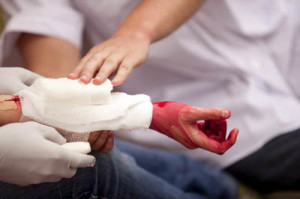
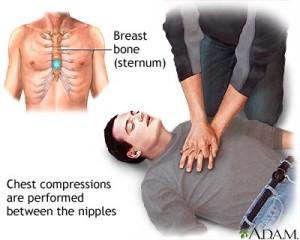
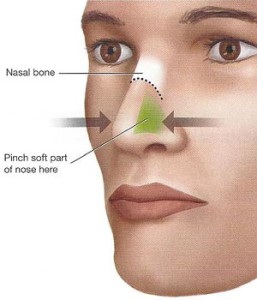
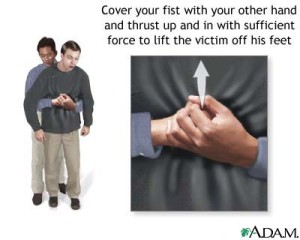
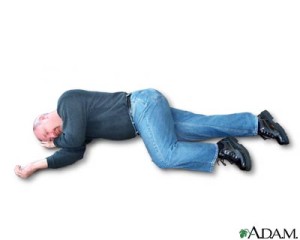
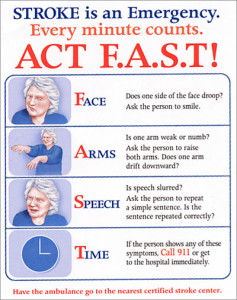
Very informative & well rounded up covering most of common conditions needing first aid.
The section of nose bleed/ epistaxis was nicely written. Just to share my working experience.
I would add on that the common mistake most people in Malaysia make is not maintaining the continuous pressure on the nose. Majority will place the tissue/ cloth with the finger pressure & will wipe off every 1 minute to see whether bleeding has stopped. If no pressure maintained continuously for 10 minutes, the blood will continuously flow as it has not enough time to form a clot,
Majority people will also tilt their head backwards, i noticed mainly taught by parents. Maybe it is a subconscious tradition. Head should be facing downwards with a basin or plastic on table or lap to collect the draining blood.
Keep the articles coming Dr Yoong 🙂
Dr Ahmad Nordin
ENT Specialist
Is it advisable to perform these procedures without proper training? In a legal point of view, if a passer by did perform this, and somehow made it worse due to lack of training, could the person be sued?
Hi Miza,
Thank you for the reply and question.
Yes, legally the victim has the right to sue. Whether or not it can be proven that the ‘help’ deemed it worse, is another story. In reality, if one is not confident of advanced first aid techniques, the best is to call for help and do what is within their ability.
That is why health practitioner often advise the public to learn first aid techniques and basic life support. These skills are invaluable and you can help save someones life.
Regards.